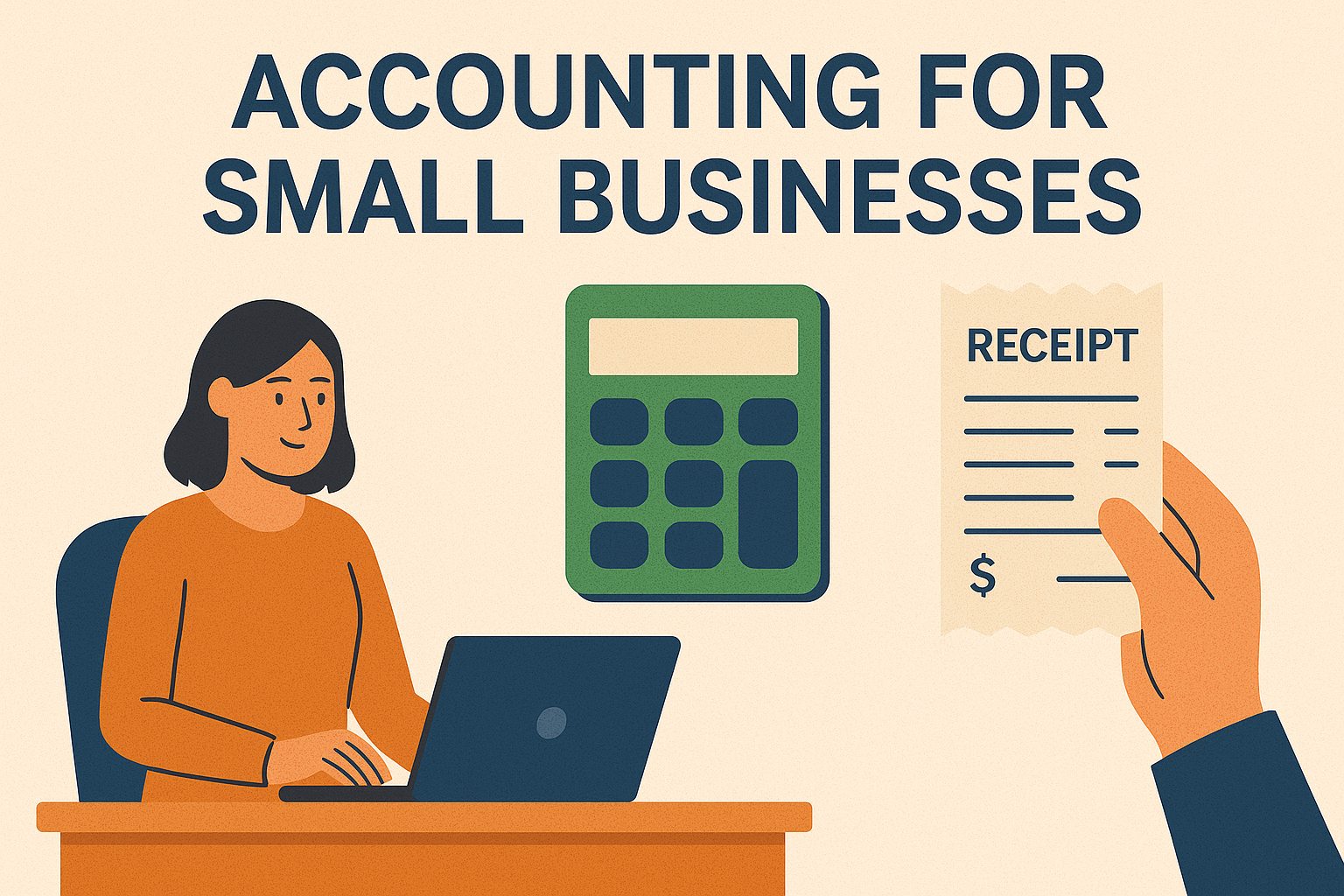Managing Inventory for a Small Store in India
Introduction
Inventory is the backbone of any small retail store. Whether you run a Kirana shop, a mobile accessories outlet, or a clothing store, managing inventory efficiently ensures that products are always available when customers need them—without overstocking or incurring losses. In India, where small businesses operate on thin margins, poor inventory management can lead to dead stock, cash flow issues, and even customer dissatisfaction.
This guide explains how small store owners can set up and maintain a simple, yet effective, inventory management system to boost profitability and stay organized. We’ll cover:
- What inventory management is
- Why it matters for small Indian retailers
- Inventory types and categories
- Tools (manual and digital)
- Inventory control techniques
- Common mistakes to avoid
What is Inventory Management?
Inventory management is the process of ordering, storing, tracking, and selling stock—whether raw materials, components, or finished goods. For small stores, this mostly refers to tracking ready-to-sell products like groceries, garments, electronics, or household items.
Effective inventory management helps you:
- Know what to reorder and when
- Avoid overstocking or understocking
- Reduce losses due to expiry or damage
- Analyze fast and slow-moving products
Why is Inventory Management Important in India?
In India, small stores face unique challenges:
- Limited storage space
- Seasonal demand (festivals, harvest, school season)
- Cash-based purchases and low credit margins
- Perishable or semi-perishable goods
Proper inventory management helps in:
- Controlling capital tied up in unsold stock
- Preventing theft or misplacement
- Ensuring popular products are always available
- Supporting GST compliance through accurate billing and stock tracking
Types of Inventory in a Small Store
Understanding the types of inventory helps you track it better:
1. Fast-moving inventory
Examples: Maggi, Parle-G, mobile chargers, notebooks
2. Slow-moving inventory
Examples: Festive decorations, premium snacks, seasonal items
3. Perishable inventory
Examples: Bread, dairy, vegetables
4. Non-perishable inventory
Examples: Rice, soaps, clothes, steel utensils
5. Dead stock
Items not sold for over 6-12 months; often outdated or damaged.
How to Start Managing Inventory: Basic Setup
Step 1: Categorize Products
Create categories like:
- Grocery
- Stationery
- Household
- Snacks & Beverages
- Electronics
Step 2: Create a Stock Book or Excel Sheet
Track:
- Item Name
- Purchase Price
- Selling Price
- Quantity in hand
- Vendor Name
- Reorder Level
You can use:
- Physical register
- Microsoft Excel or Google Sheets
- Free apps like Vyapar, KhataBook, or OkCredit
Step 3: Define Minimum Stock Levels
Set reorder levels based on sales:
- For high-demand items: keep extra stock
- For slow movers: buy in small quantities
Step 4: Assign Responsibilities
If you have staff, designate one person to update stock every evening.
Manual vs. Digital Inventory Tracking
Manual (Register/Notebook)
Pros:
- No learning curve
- Low cost
Cons:
- Time-consuming
- Prone to errors and theft
- Difficult to analyze
Digital Tools (Mobile or PC-based)
Examples:
- Vyapar App: For billing + inventory
- Zoho Inventory: Good for slightly bigger stores
- Google Sheets: Custom tracking, free, cloud-based
- KhataBook: Easy credit and payment tracking
Pros:
- Easy reporting
- GST-compliant invoicing
- Backup and sync options
- Alerts for low stock
Cons:
- Requires basic digital skills
- May need internet
Inventory Control Techniques
1. FIFO (First-In, First-Out)
Sell older stock first to avoid expiry or spoilage.
2. LIFO (Last-In, First-Out)
Used less in retail, more in warehouses.
3. ABC Analysis
Classify items:
- A = High-value, low quantity (e.g. electronics)
- B = Moderate value and volume
- C = Low-value, high quantity (e.g. biscuits)
Focus most on A and B items for profit.
4. Par Level Inventory
Set minimum quantities for each item. Reorder when the stock falls below the par level.
5. Batch Tracking
Track products by purchase date/batch. Helps in return management and expiry tracking.
How to Forecast Inventory Needs
Use these methods to predict what to stock:
1. Sales Data
Analyze monthly sales to spot patterns.
2. Seasonal Trends
Boost inventory before:
- Diwali, Holi, Eid
- Back-to-school season
- Wedding season
3. Customer Feedback
Ask regular buyers what they want more often.
4. Market Trends
Check what’s trending in nearby stores or on platforms like Udaan.
Best Practices for Inventory Management in Small Indian Stores
- Keep daily sales and purchase records
- Conduct weekly stock audits
- Clear old or dead stock through discounts
- Use barcodes or numbering if inventory is large
- Always check delivery items before adding to stock
- Build relationships with reliable suppliers
Dealing with Common Inventory Challenges
Problem 1: Overstocking
Solution: Use sales data to plan purchases; avoid bulk buying without need.
Problem 2: Stockouts
Solution: Set reorder levels and monitor regularly. Always keep safety stock for bestsellers.
Problem 3: Theft or Misplacement
Solution: Use a stock register, daily billing, and occasional CCTV. Cross-check with physical stock.
Problem 4: Expired/Damaged Goods
Solution: Rotate stock using FIFO; mark perishable goods with expiry dates.
How to Handle Inventory with GST Billing
If your store is GST-registered:
- Use GST-enabled software
- Issue proper invoices
- Track Input Tax Credit (ITC)
- Match physical stock with purchase/sale data
Tools like Vyapar or Tally Prime simplify GST billing with inventory.
Role of Inventory in Business Profitability
Inventory affects cash flow, revenue, and customer retention:
- Overstocking locks your money
- Stockouts reduce sales
- Accurate stock = better planning = higher profits
Example: A Kirana store in Sigra that maintained digital inventory increased monthly profits by 18% by eliminating dead stock and investing in fast-moving items.
Case Study: How a Varanasi Store Improved Inventory
Store Name: Sai Kirana Bhandar, Varanasi
Problem: Always short on top-selling products like milk and soft drinks, while shelves were full of unsold pulses and outdated biscuits.
Solution:
- Switched from manual to Vyapar app
- Did monthly sales analysis
- Reduced order quantity for low-sellers
- Set par levels and reorder alerts
Results:
- Increased product availability
- Reduced wastage by 60%
- Monthly revenue went up by 20% in 3 months
FAQs on Inventory Management for Indian Small Stores
Q1: Do I need to use software to manage inventory?
Not mandatory, but highly recommended if you have more than 50 SKUs.
Q2: What if I don’t have time to manage inventory daily?
Assign it to staff or do it weekly. Use digital tools to reduce manual work.
Q3: How do I deal with expired goods?
Clear stock via discounts, mark expiry clearly, and use FIFO.
Q4: Is inventory required for GST filing?
Yes, especially if you’re claiming ITC. It helps reconcile purchases and sales.
Conclusion
Inventory management is not just for big retailers or supermarkets. Even the smallest store in India can benefit by tracking stock, reducing waste, and optimizing purchases. Start small—with a register, sheet, or app—and grow into a system that matches your business size.
With better inventory control, you’ll:
- Save money
- Delight your customers
- Make smarter purchasing decisions



